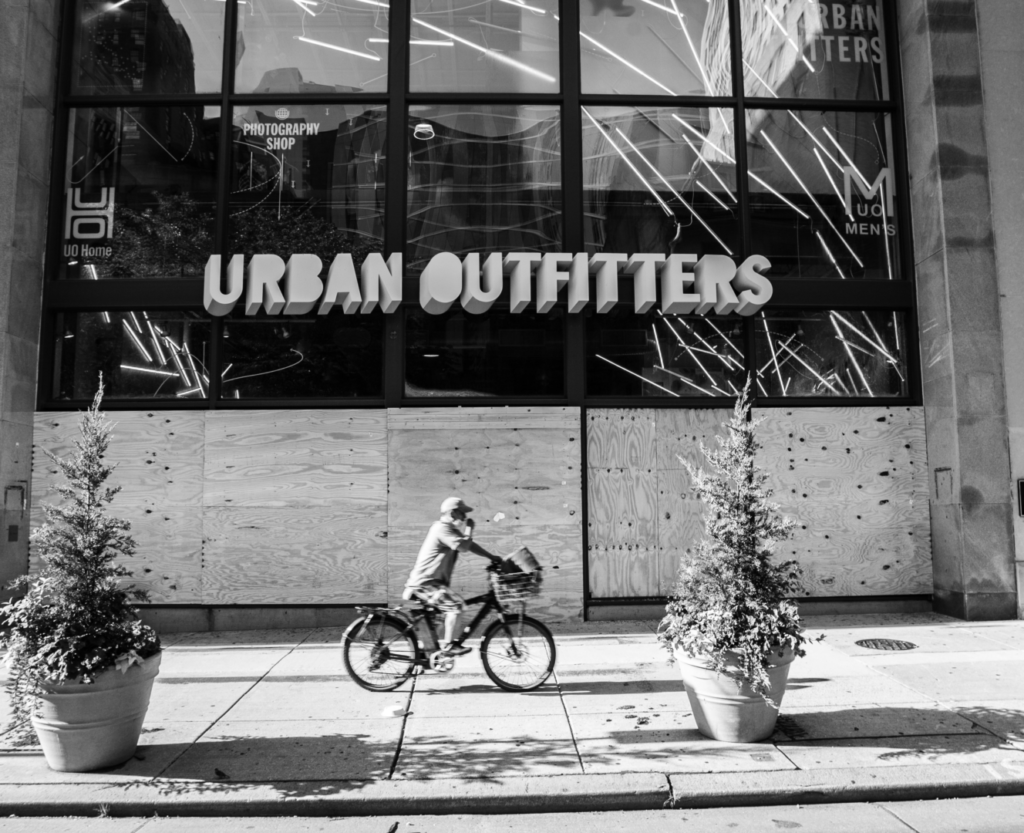Urban Outfitters is easily one of the most recognisable names on the British high street, known for its unique blend of fashion, homeware and lifestyle products.
With a loyal customer base and a distinctive brand identity, the retailer has managed to thrive in an era where many high street brands struggle to stay relevant.
From its early days to its expansion into the UK market, Urban Outfitters has carved out a niche that just seems to keep shoppers coming back for more.
Where Did Urban Outfitters Begin?
Urban Outfitters was founded in 1970 by the trio of Richard Hayne, Judy Wicks and Scott Belair while they were students at the University of Pennsylvania.
Initially called Free People, the store aimed to offer an alternative shopping experience to young people looking for vintage-style clothing and quirky home décor. It wasn’t long before The business quickly grew, rebranding as Urban Outfitters and expanding across the United States throughout the 1980s and 1990s.
The brand’s success lies in its ability to capture the essence of youth culture. Unlike traditional high street retailers, Urban Outfitters focused on individuality, offering an eclectic mix of products that felt curated rather than mass-produced.
The company’s approach to store design also set it apart, with many locations featuring industrial interiors, repurposed furniture, and an atmosphere that felt more like an art gallery than a typical retail space.
Breaking into the UK Market
Urban Outfitters arrived in the UK in the 1990s, opening its first store in London’s High Street Kensington. The British market proved a perfect fit for the brand, with young consumers eager for fashion that blended vintage aesthetics with contemporary trends.
Over the years, the retailer expanded its footprint, launching stores in cities such as Manchester, Glasgow and Bristol.
One of the key reasons for Urban Outfitters’ success in the UK was its ability to tap into British youth culture. By blending American cool with the edgier sensibilities of UK street style, the brand created a unique shopping experience that resonated with trend-conscious shoppers.
Urban Outfitters also benefited from being one of the few retailers that offered a mix of fashion, homeware and novelty items all under one roof, making it a destination store rather than just another clothing shop.
Adapting to the Digital Age
While many high street brands have struggled to adapt to the rise of online shopping, Urban Outfitters has embraced digital retail in a way that complements its physical stores. The brand’s website and mobile app offer a seamless shopping experience, with curated collections, exclusive online drops and user-generated content that encourages engagement.
Social media has played a huge role in maintaining Urban Outfitters’ relevance. With a strong presence on Instagram, TikTok and Pinterest, the brand has managed to connect with Gen Z and millennial shoppers in an authentic way.
Influencer collaborations, trend-driven campaigns, and behind-the-scenes content have all helped keep the retailer at the forefront of youth fashion.
A Unique Approach to Retail
One of the standout aspects of Urban Outfitters’ success is its commitment to creating an immersive in-store experience. Unlike many traditional retailers that rely purely on product selection, Urban Outfitters ensures that every store has a distinct personality.
From hosting live music events to showcasing independent designers, the brand goes beyond shopping and offers customers an experience that feels fresh and exciting.
Another key factor is its willingness to experiment. Urban Outfitters frequently collaborates with emerging brands, artists, and designers, ensuring its collections remain unique and ahead of the curve. The introduction of lifestyle products, from vinyl records to skincare, has also broadened its appeal, making it a go-to destination for more than just clothing.
What Does the Future Look Like For Urban Outfitters?
Despite the challenges facing the retail sector, Urban Outfitters continues to thrive. Its ability to blend online and offline experiences, embrace cultural shifts and maintain a strong brand identity has allowed it to remain a high street favourite.
As consumer habits evolve, the brand will need to continue adapting, whether through new digital strategies, sustainability initiatives or innovative retail concepts. However, given its track record of reinvention and creativity, Urban Outfitters looks set to remain a staple of the British high street for years to come.



